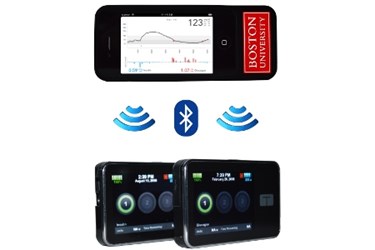Could A Bionic Pancreas Be Ready By 2017?
By Jof Enriquez,
Follow me on Twitter @jofenriq

A bionic pancreas device that automatically controls blood sugar levels has been developed by researchers at Boston University and may be ready for market by late 2017. Artificial pancreas systems have the potential to help millions of diabetics avoid the risks associated with unpredictable fluctuations in blood sugar level.
The new system consists of a Dexcom continuous glucose monitor (CGM), two Tandem t:slim infusion pumps, and a smartphone app running algorithms that calculate blood sugar levels, according to an article in Diabetes.co.uk. The monitor sends blood sugar readings to the smartphone apps, via Bluetooth, every five minutes. The algorithm then calculates how much insulin or glucagon needs to be administered by the pump.
The bionic pancreas device’s efficacy was demonstrated in a series of four outpatient studies involving adults, adolescents and pre-adolescents. The device was able to deliver mean HbA1c levels of about 6.5 percent in adults and children with Type 1 diabetes, according to the study report. The findings recently were presented by lead researcher Edward Damiano, PhD, during a presentation at the American Association of Clinical Endocrinologists’ (AACE) 24th Annual Scientific and Clinical Congress.
Damiano previously described how the device could help diabetics achieve good glycemic control without having to use manual fingersticks and tinker with multiple devices throughout the day.
“The most practical difference would be not having to think about diabetes 24/7, not having to constantly make decisions about things that those of us without Type 1 never have to think about,” Damiano said in a previous statement. “And another extremely frustrating aspect of diabetes that would be completely eliminated by this device is the enormous sense of failure when you stare at that glucose meter and, despite everything you do to control it, your blood sugar is not in or near the normal range. But of course you didn’t fail; the tools that are available to you failed.”
A separate clinical trial already has proven the efficacy of artificial pancreas systems over conventional methods. A world-first study conducted by researchers at the University of Montreal compared three types of diabetes treatments: a single-hormone artificial pancreas, a dual-hormone artificial pancreas, and a conventional insulin pump. The artificial pancreas configurations outperformed the conventional system in preventing both hypoglycemic and hyperglycemic episodes.
The potential of artificial pancreas systems has medical device companies investing in R&D in this type of device. For example, Medtronic recently launched an insulin pump the company claims is a “breakthrough” toward development of a true artificial pancreas. To that end, Medtronic also inked a pact with DreaMed to integrate artificial pancreas technology into Medtronic's insulin pumps.
However, some experts are concerned that current development efforts may be ignoring the security aspect of artificial pancreas devices.
Diabetes researcher Dr. Yogish Kudva recently warned that cyberhackers could exploit the unencrypted wireless data exchanged between CGMs and insulin pumps, causing faulty blood sugar readings, which could prove fatal.
"I think the most important issue is to get security people more involved," Dr. Kudva said in an ABC News article. "I don’t think there is enough security expertise at this time."
Sarah Ann MacLeish, an endocrinologist and osteopath at University Hospitals Case Medical Center in Cleveland, suggested in the article that these devices feature some kind of a warning system. For example, a built-in alarm could be triggered "if there’s something programmed in there that doesn’t seem right," she said, adding that a patient should be able to double-check and override the insulin dose, if necessary.
Image credit: The Bionic Pancreas Team
